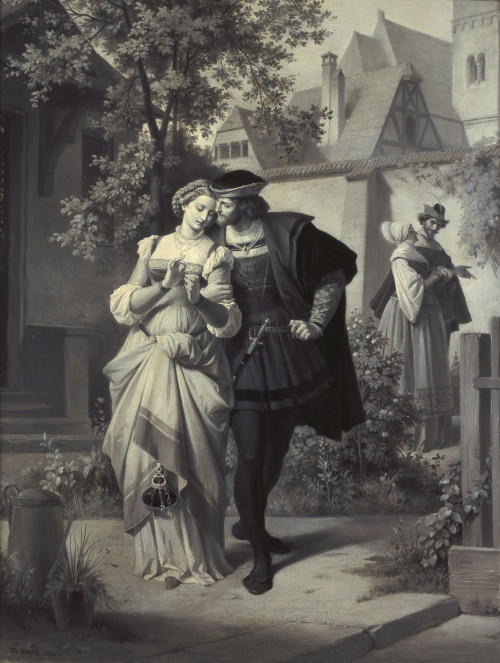This room considers the two most famous early works from Goethe’s Frankfurt period: Werther and Faust.
Even before Goethe went to Weimar in 1775 at the age of 26, he wrote pivotal works at his family home in Frankfurt. In 1774 his novel The Sorrows of Young Werther was published, which made the young author famous overnight. The epistolary novel with the story of Werther’s love and suffering pierced an entire generation to the heart in its tone and intensity. The Urfaust was also written in Frankfurt. In Faust Goethe found a theme that lasted him a lifetime, he completed the second part only shortly before his death. The unhappy lover and the scholar who makes a pact with the devil are among the best-known figures in German literature. They soon became the subjects of the visual and applied arts, Faust was also set to music many times. Lotte and Werther became symbols of a boundless love doomed by convention. Their figures appeared in print series and decorated fine objects like fans and delicate porcelain. These were often small, personal objects with which their owners revealed themselves to be sensitive people. There were many printed illustrations to Goethe’s Faust; not least Romantic visual artists were fascinated by this work. Whereas Werther, as a figure of identification for contemporary readers, appeared in current clothing and present-day environs, Faust appeared in medieval surroundings. The latter revived thematically the milieu of the alchemists, treasure-seekers, magicians, and early modern scholars, whose imagery in Dutch painting Goethe knew from his family home.
Objects in the room
-

Johann Heinrich Schröder
CHARLOTTE KESTNER GEB. BUFF
Around 1782, pastel on parchment
-

Johann Heinrich Schröder
CHARLOTTE KESTNER GEB. BUFF
Around 1785, pastel on parchment
-

Arent de Gelder
ALCHEMIST / DR. FAUSTUS
Around 1680/90, oil on canvas
-

Unbekannt
DER ALCHEMIST
2nd half 18th century, oil on wood
-

Theodor Pixis
FAUST UND GRETCHEN, MARTHE UND MEPHISTO IM GARTEN
1863, oil on canvas
-

Johann Georg Trautmann
SCHATZGRÄBER IN EINER RUINE
Undated, oil on canvas
-

Justus Juncker
EIN GELEHRTER IN SEINEM STUDIERZIMMER
1751, oil on oak wood